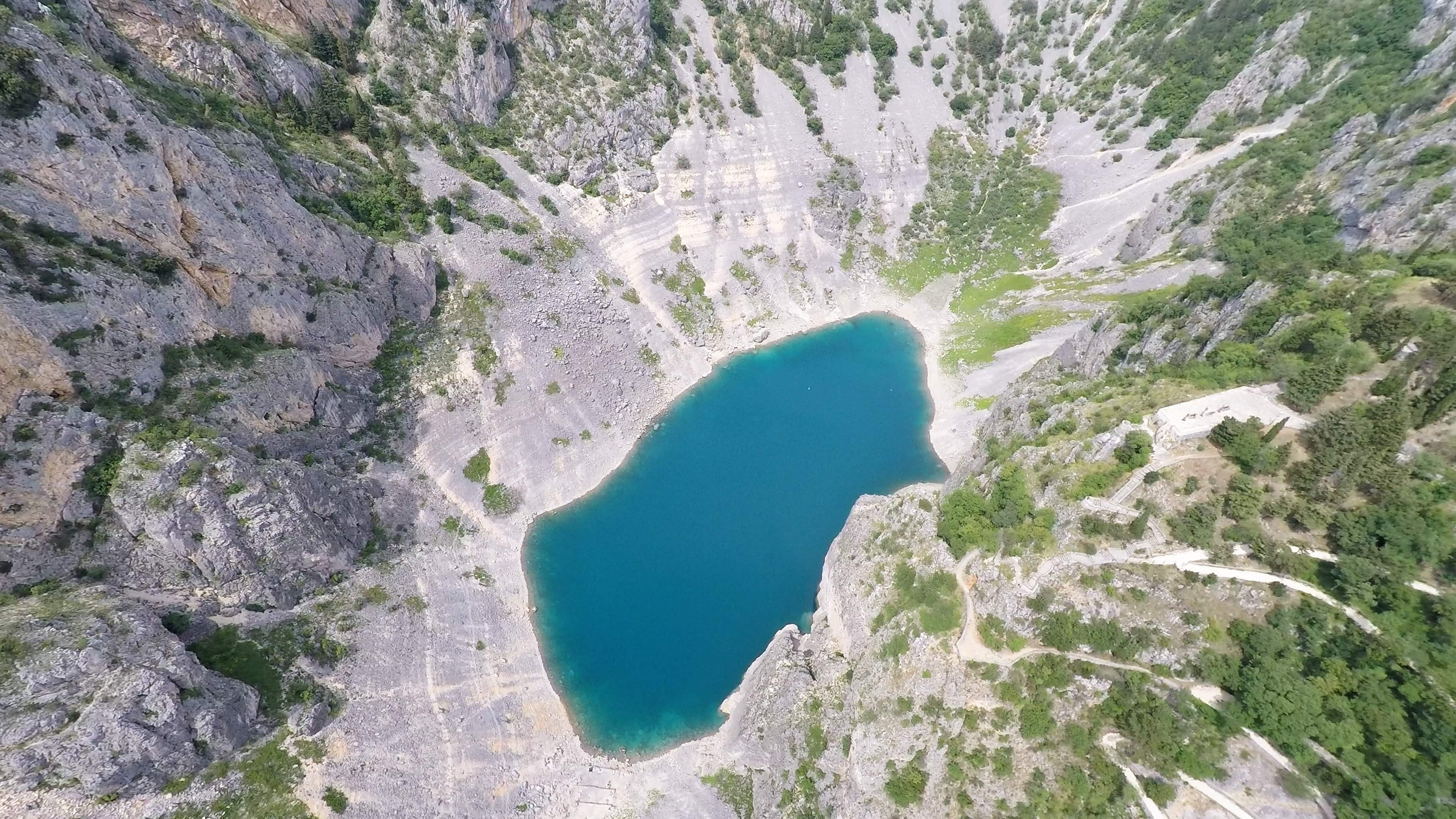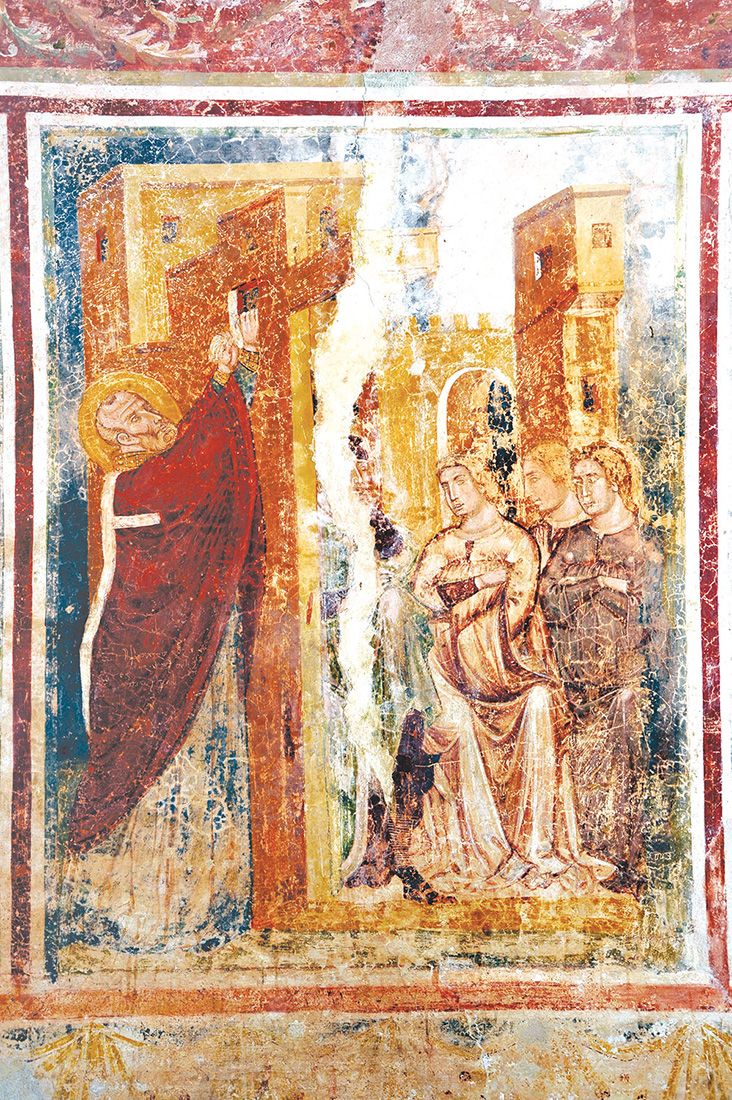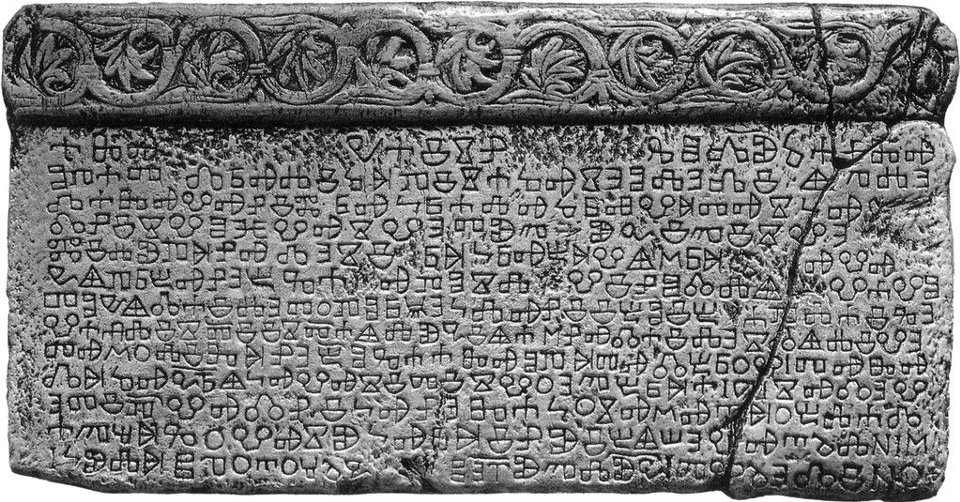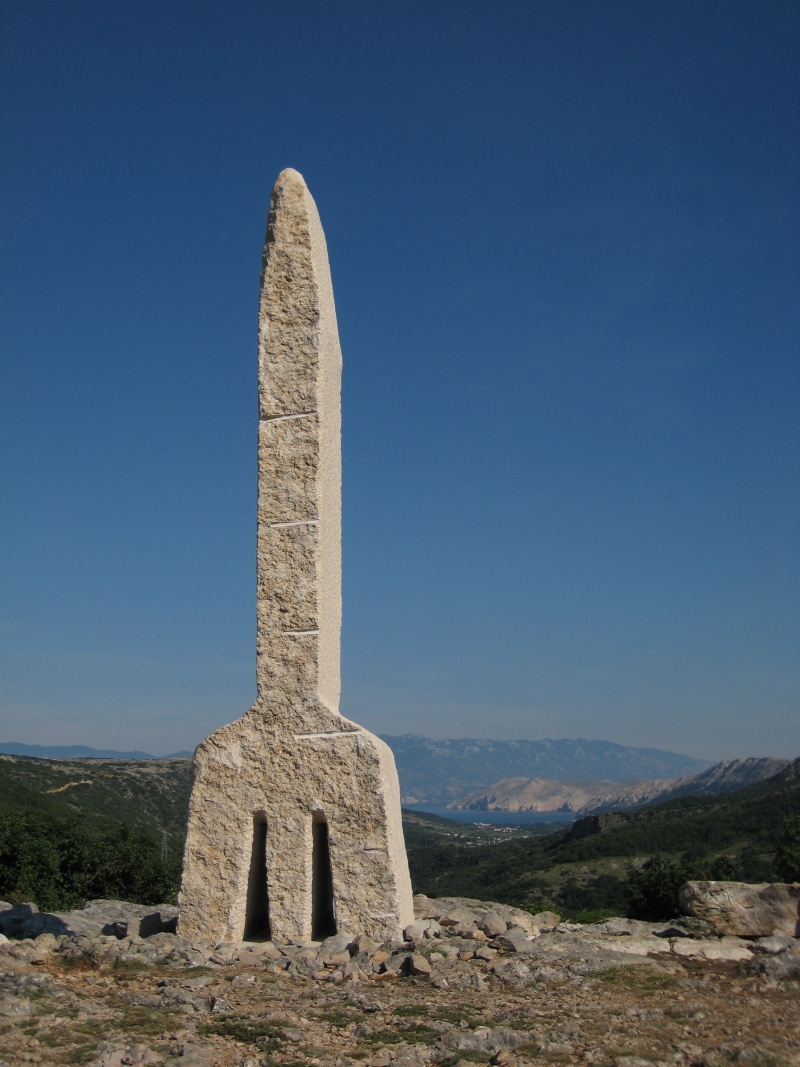Attorney Confirms Hiring by Deputy Prime Minister Milošević
ZAGREB, 23 Feb 2022 - Attorney Anto Nobilo said on Tuesday that Deputy Prime Minister Boris Milošević hired him after the USKOK anti-corruption office accused him of incitement to abuse of office in the allocation of incentives to businesses.
Speaking to Hina, Nobilo said he was now waiting to see the case file so that he could start preparing a defence.
He said Milošević had not been questioned at USKOK nor summoned, and that he would not state his defence before seeing the case file.
Nobilo said Milošević was accused of incitement to abuse of office.
Speaking for RTL television earlier in the evening, he said that, judging by the decision to conduct an investigation, incitement was suspected but there was room for a defence.
"Milošević believes that he is not guilty," Nobilo said. "He advocated for the constituents who elected him and did not ask someone else to commit a crime."
Nobilo said Milošević should not appeal against the investigation, which is also looking into Darko Horvat, who was arrested on Saturday on suspicion of abuse of office, after which he was relieved of duty as construction minister at his own request.
"I suggested against it because there is reasonable doubt. USKOK embarked on a criminal procedure absolutely correctly upon getting a witness deposition. It believed the deposition and that, as a basis of reasonable doubt, is enough to launch an investigation," Nobilo said.
USKOK is investigating six persons. Horvat, who is in one month's custody, and his former aide Ana Mandac are accused of abuse of office.
Besides Milošević, USKOK is accusing of incitement to abuse of office, according to unconfirmed information, Regional Development and EU Funds Ministry state secretary Velimir Žunac, the head of the Administration for assisted areas, Katica Mišković, and former minister Tomislav Tolušić.
As the main suspect, Horvat was arrested after Mandac told USKOK that incentives were allocated to businesses that did not meet the criteria when Horvat served as economy minister. Horvat claims he was only signing documents brought to him by Mandac.
For more, check out our dedicated politics section.
No Seagulls Allowed: Two Hawks Employed to Guard Imotski Lake from Unwanted Guests
February 23rd, 2022 - Two hawks named Seka and Bea have been tasked with keeping the Blue Lake in Imotski safe from seagulls
Known to invade urban areas in search of food, seagulls are generally seen as a nuisance all over the Croatian coast. In Istria, the onslaught of gulls is being fought through measures such as nest monitoring and replacing seagull eggs with plastic fakes.
Further south, in the Dalmatian hinterland, things were taken up a notch with proper guards employed to fight the good fight against the annoying gulls.
For a while now, seagulls have been treating the stunning Blue Lake (Croatian: Modro jezero) in Imotski as their living room, and plastic eggs probably wouldn’t have been of much help here - the situation called for more extreme measures.
Enter the guards: Seka and Beatrice Bea, two female Harris’s hawks who’ve been tasked with keeping the Blue Lake safe from the gull invasion.
As reported by Slobodna Dalmacija, seagulls laid siege to the Blue Lake in Imotski about ten years ago and haven’t shown any intention to leave ever since.
Every year from the end of February to September, i.e. as long as there’s water in the lake, seagulls flock to the lake in large numbers, devastating the flora and fauna and inconveniencing the people of Imotski and their guests who often go swimming at the lake.
The gulls eradicated all the frogs, gone is the song of the blue rock thrush, and grass snakes have left the area too. Not to mention all the gull feathers and feces covering the rocks and cliffs around the lake aren’t exactly a pretty sight.
 The Blue Lake in Imotski / Image by Yacht Rent, Creative Commons
The Blue Lake in Imotski / Image by Yacht Rent, Creative Commons
There have been efforts to scare the gulls away with the sounds of cannon fire, firecrackers, scarecrows in various forms, but nothing seemed to work, and the seagulls kept flocking to the Blue Lake to rest after feasting at one of the landfills in the wider Imotski area.
And then came the hawk guards. Someone realised that the solution for the gull problem lies in nature, and soon there was talk of trained falcons and hawks, who apparently have the ability to make seagulls pretty nervous.
Falconers Emilio Međušić and Stipe Klisović of the Šibenik Falconry Center arrived in Imotski last year and brought a trained hawk along to test the hypothesis.
It only took for the hawk to spread his wings over the Blue Lake, and the flock of seagulls panicked and flew away in a frenzy. They reportedly sent a few scouts back to the lake some time later to see if the coast was clear, but as long as the hawk was seen somewhere in the area, not a single gull dared to fly down to the lake.
The Public Institution More i Krš (Sea and karst) and the City of Imotski decided to open two permanent positions for hawks to guard the lake from the pesky gulls. They acquired two hawks and ensured the birds were properly trained.
Grgo Nikolić from Imotski, a self-described bird lover and member of the hunters’ association Imotska Krajina, took over the training together with his son Slavko. They themselves trained at the Falconry Centre in Šibenik, and are now tasked with taking care of Seka and Beatrice Bea.
‘We’ve been working with Seka and Bea and we’re very pleased with what we achieved so far. We now have to get them accustomed to the environment they’ll be working in, our Blue Lake with its surroundings. We’re in the area every day, getting Seka and Bea familiar with every part of the lake, as that’s where they’ll be operating. Slavko and I both have to gain the full confidence of those birds; they’re starting to get settled in their new habitat, and are growing more accepting of us as their friends and trainers’, said Grgo.
 Harris's hawks / Pixabay
Harris's hawks / Pixabay
A few days ago, a handful of seagulls tried to scout the area and were promptly chasen away by Seka and Bea. The time of year when gulls are known to gather at the Blue Lake is fast approaching, so the two hawks will soon have a lot of work to do.
‘I’m convinced that Bea and Seka will manage to drive the gulls away, back to their main habitat on the other side of Biokovo mountain, where they could settle on the coast once and for all’, said Nikolić.
Imotski Tourist Board Director Luka Kolovrat is also pleased with Seka and Bea’s performance so far. He pointed out that the presence of two hawks might become a tourist attraction as well.
‘Last year, we saw just how much attention a single hawk from the Falconry Center drew among the tourists; they filmed the entire thing, asked about how the gulls are being chased away. Our Seka and Bea will surely make for a good addition to the tourist offer in our town’, said Kolovrat.
Steve Tsentserensky: 1 Croatian Digital Nomad Permit, 1 Huge Promotion
February 23, 2022 - His one-year digital nomad permit is about to expire, but the phenomenal Steve Tsentserensky promotion of Croatia continues.
"Can you believe it? Someone is actually moving to Croatia after that article about me on CNBC."
And that someone is not alone.
One of the early reactions to Croatia introducing a digital nomad visa last year was what benefits it would actually bring Croatia. One of the biggest side benefits, I replied, is a new army of enthusiastic promoters of their adopted country.
That was before I met Ohian Steve Tsentserenky, who Jan de Jong suggested I interview him as one of the early digital nomad permit recipients. Rather than interview Steve, he wrote his own story - Journey to Get the Croatian Digital Nomad Permit.
I first came across Steve's video work when I saw this amazing video of Zagreb, the city he has come to love like no other.
And after almost a year of great promotion, it was nice that Zagreb said thank you in a meaningful way by making Steve the Zagreb Digital Nomad Special Guest Ambassador.

For Steve's promotion has been multi-faceted and global.
The star of a series of articles about living abroad on CNBC, all three of Steve's articles have been trending on the American news portal, and the videos have received sizable views and even more impressive engagement.
More than 320,000 views so far, and over 1,000 comments on the first video. I have been with Steve on the streets of Zagreb when strangers approach and ask if he is the $47 guy. Locals and nomads. You can see his CNBC articles here.
With a great eye for a good shot and a trusty drone to boot, I asked Steve back in November if he would be interested in discovering eastern Croatia on a 6-day trip.
He was. And this is how he saw it. How many places in this video can you name? You can read about the tip in Time to Tell the Truth about Slavonia Full of Life.
The footage he took was extraordinary, and it is safely in the CROMADS archives and will be put to very good use.
Steve also offered to make the official CROMADS video, which is always a pleasure to watch.
Away from the camera, however, Steve has also been busy. One of the other great benefits that nomads will bring to the next generation in Croatia is mindset. As Croatia's youth talks of emigration, here is an American talking to 7th graders in schools about why Croatia and not America. It is a drip drip feed, but the more it happens, the more young minds will be positively influenced.
And of course, there is no digital nomad conference in the region without Steve as a panelist or speaker. I think he has spoken at about 10 conferences in the last year, including internationally (in person in Montenegro, and remotely in Bali), with more international appearances scheduled.
As he prepares to reluctantly leave as Croatia's bureaucracy demands it, a huge thanks to Steve for all he has done for Croatia - and will continue to do. And one hopes the bureaucracy will become easier for promoting champions such as him - I know of foreigners who have done a lot less who have received Croatian citizenship.
For more news and features about digital nomads in Croatia, follow the dedicated TCN section.
Croatian National Tourist Board, DNA Croatia Join Forces
February 23, 2022 - The Croatian National Tourist Board has joined forces with the Digital Nomad Association Croatia. Great news, and time to talk about the elephant in the room.
Croatia's digital nomad story is gathering pace, and the energy is real. Johannes Voelkner, owner of the first and largest digital nomad business travel club is in the country finalising the location for his next NomadBase conference from May 9-15 (as exclusively announced on TCN), Saltwater Nomads - in partnership with TCN, Zagreb Tourist Board, Dubrovnik Tourist Board, and the City of Dubrovnik - will shortly announce two fantastic nomad conferences for May and June, and the work of DNA Croatia to bring together the community and connect initiatives all over the country is beyond impressive (read more in Cohesion, Unity & Planning at Croatian Digital Nomad Reflection Day 2022). My recent meeting with Minister of Tourism and Sports, Nikolina Brnjac, had a large focus on the DN opportunity. And next week sees the 2nd Split Winter Tourism Roundtable, with 2 of the 5 presentations dedicated to the DN opportunity.

And then, last week, this LinkedIn post from the driving force of the Croatian digital nomad permit and President of DNA Croatia, the legend that is Jan de Jong:
With some 2.000 digital nomads coming to Croatia every single month - we are slowly but surely becoming a DN-hotspot in Europe.
For that reason - the Digital Nomad Association Croatia is excited to start working more closely together with the Croatian National Tourist Board on promoting Croatia internationally.
This year we have some many amazing initiatives planned for digital nomads all across the country. Therefore - the timing to start working together with CNTB couldn't be better. Thank you Kristjan Stanicic for your support.
Pozdrav iz Zagreba,

I knew the announcement was coming, and I smiled when I saw Jan's post - even more so when I checked my messages one hour later. Had I seen this, what did I think? Did I know about it? Was I involved? A good opportunity to finally address the elephant in the room, the ongoing lawsuits against me by the Croatian National Tourist Board. If you are not up to speed, the TCN series, Diary of a Croatian Lawsuit really is an entertaining read, and one which will go all the way to the European court in Strasbourg in 2063 if necessary - check it out here.
So it may seem strange of me to congratulate the Croatian National Tourist Board and its director, Kristjan Stanicic, on this excellent initiative with DNA Croatia (there is a reason I don't congratulate them often), but good initiatives deserve to be recognised.
There has been a lot of ego in the Croatian digital nomad story (and I don't exclude my own from the story), but things are settling down, as key stakeholders are putting community and collaboration ahead of their private interests and agendas. TCN has been writing about the nomad opportunity for Croatia since May, 2019 and is the biggest media on the topic, and the national tourist board would be a natural partner in normal circumstances. Ah, Croatia.
I actually presented the nomad opportunity for a pilot in Trogir to two senior members of the national tourist board in February, 2020. One didn't seem to understand the opportunity, the other did but said they could not support, as there was a tax issue. And she was right, as things stood then. And then...
A few weeks later, Jan de Jong called me and asked for some advice on tourism for a conference he was speaking at. I send him some articles to read, and he called me back an hour later raving about this concept called digital nomad tourism. This could be amazing for Croatia. Here is Jan, introducing the concept at the conference in May, 2020.
And the rest is history, as Jan did what I certainly could not. This private initiative, which enlisted the support of Prime Minister Plenkovic and five ministries, resulted in Europe's second digital nomad visa/permit less than 8 months later. And with changes in the tax legislation to help nomads on the permit. the national tourist board was free to push the initiative, which it did through its terrible and highly ineffective Croatia, Your New Office campaign. Just how ineffective you can read shortly on TCN. To think what DNA Croatia would have done with that budget...
Things then got a little strange. Bizarre articles started appearing on portals which had never written about me before. A comprehensive article about the opening of Zagreb Digital Nomad Week managed to completely airbrush me from the event and with no mention of TCN whatsoever, as four out of the five speakers even had a photo in the article. I was not quite airbrushed out, as my bald patch made it into the corner of one of the photos.
Dubrovnik for Digital Nomads, Zagreb Digital Nomad Week & Ambassador Program, Dubrovnik Digital Nomads-in-Residence, not even a mention that I came across - not even when the last two picked up 4 international awards at Conventa 2021 in Ljubljana, despite the national tourist board being present at the same conference. And yet, for a project I was not involved in - the red carpet rolled out. A sponsored article and the head of global PR at the press conference launch of a private initiative I was not part of.
I didn't mind, nor did I expect, anything less from an organisation suing me, but it felt wrong for Croatia that those whom I worked seemed to be tarnished by association. Or so it seemed to me. There have been several occasions where I have been told I cannot come to a meeting 'because of the lawsuit.' I don't mind, but it was clearly an issue for some.
Although I am not part of DNA Croatia, I work closely with them (on bringing NomadBase to Croatia, for example), and for me, the best news about this Croatian National Tourist Board/DNA Croatia partnership is that two natural partners can finally work together, where previously there seems to have been a reluctance. So I do sincerely congratulate Director Stanicic on this initiative, and I hope that all funds will be transferred to DNA Croatia, so that they are not wasted as they were with Croatia, Your New Office (more on that soon).
Would I want to work with the national tourist board again? Clearly not until there is a change of director (and I am hearing encouraging noises on that score), but depending on who the new director is, I would consider making an appointment if I can see that there might finally be a new direction and proper strategy.
Until then...
For more news and features on digital nomads in Croatia, follow the dedicated TCN section.
Unofficial Source Claims Stjepan Curaj Could Take Darko Horvat's Place
February the 23rd, 2022 - An unofficial source has suggested that Darko Horvat's replacement could be Stjepan Curaj, but this is yet to be confirmed in any sense with any certainty.
The now former Minister Darko Horvat is being held in custody following his arrest for alleged corruption, about which we've written extensively since the situation occurred over the past few days. USKOK swooped in and as much as PM Andrej Plenkovic tried to calm things, people are rightly up in arms about yet another minister being investigated and arrested for the apparently age-old (alleged) crime of corruption.
As Poslovni Dnevnik writes, the name of the new minister set to come and take Horvat's place is still not officially known, but as was unofficially confirmed by the Government for N1, it could be Stjepan Curaj, the head of the HNS (Hrvatska Narodna Stranka/Croatian People's Party).
Maybe someone else is still in the game with their eye on Darko Horvat's still warm chair, maybe those people could be still valid options, but according to unofficial sources from the Government, Stjepan Curaj is said to already be a member of the Banija/Banovina (post-earthquake) reconstruction staff, is entirely informed about the whole story, is very familiar with the details and the belief is that he would do his best in that business.
The party involved isn't one that you tend to hear of anywhere as much as the likes of HDZ or SDP, but despite that, it is a party that split in order to save the Government of Andrej Plenkovic back in the day, and they paid for that in the elections.
If the Prime Minister does end up deciding that Stjepan Curaj will be the new minister to take over from Horvat, he might be indebted to the Croatian People's Party which saved him in his last term when he expelled Most (Bridge) from the Government, and maybe he would actually seek to somehow reward the Croatian People's Party for their part in that sticky situation.
For more, check out our dedicated politics section.
Sixteenth Century Belaj Castle Selling Croatian Wine Successfully
February the 23rd, 2022 - The gorgeous sixteenth century Belaj Castle, brought back to life with a Russian investment, has been selling Croatian-made wine very successfully and without any worries when it comes to timeframes.
As Poslovni Dnevnik/Marta Duic writes, the sommelier vice-champion of Croatia, Josip Oriskovic, presented ten wines from the Dvorac Belaj Winery (from Belaj Castle) at the Wine Club over recent days, three of which were premieres because the wines won't even be placed and available on the market until next week.
Along with the Belaj Castle, which is located within the stunning and dramatic landscape of the Ucka mountain, there are also historical vineyards that were restored back in 2011 by the Russian Belay family.
Namely, the Russian financier Oleg Belay, who has been coming to Umag for years, decided to buy the castle and the property after learning that they bear the same name as their family name, leaving it to his son Zan Belay. The vineyards dotted around the Belaj Castle were soon restored, and today the estate houses a winery, a restaurant and even a proper space for events and celebrations.
“The Belaj Castle has a long history, and today we can boast of 12 hectares of vineyards and an annual production of 35,000 bottles. These are wines of smaller series, aged, and the vineyards and the castle have matured together. Although many point out that this is a Russian story, everything in the vineyard is the work of Croatian hands,'' revealed Oriskovic, adding that without this investment, there would be no restored vineyards to even speak of, much less visit and produce from.
Although most of the vineyard area has been restored, they have retained two acres of old Malvasia plantations and four acres of Chardonnay. The plantations are from the 1960's and it is from these positions that the Malvasia selection is coming along nicely, which will be available soon.
"The Malvasia selection 2019, which is due to arrive on the market next week, is a Burgundy-style Malvasia aged in Slavonian oak barrels of 3,000 litre capacities and has a creaminess to it. The last Malvasia Selection was from back in 2016, it was sold out, there are only about two hundred bottles of it left that are in our archive. As young winemakers, Kozlovic helped us out in the creation of this wine, and Ivica Matosevic helped us in the creation of our sur lie chardonnay from 2014,'' explained Oriskovic, noting that the vineyards are in an ideal position because Ucka protects them from the elements and that there is never fog on their estate.
On two hectares of Belaj Castle land they grow black varieties while everything else is white. In addition to wine production, the event organises various events about fifteen times a year, and they also offer guided tastings in which they nurture an individual approach to the guest. Oriskovic pointed out that the most frequent guests of their tastings are Scandinavians and Poles.
“The most significant investment we had was in the renovation of the vineyards because all twelve hectares were neglected. We're still concentrating on the vineyards, cellars and wines and we 're constantly investing in that. The basement has stone floors and we're the oldest Istrian cellar with a stone floor, and the property also has a tasting room, a wine cellar and a restaurant. Our main export markets are Croatia's immediate region, more precisely Slovenia, Bosnia and Herzegovina and Serbia,'' said Oriskovic.
Today, the beautiful Belaj Castle is known as the only château in all of Croatia, which means that wine production comes exclusively from grapes from the historic vineyards around the castle, and all of the wine is processed and aged right there on the property.
After they founded the Belaj Winery back in 2011, the Russian Belay family has been completely returning production to the cellars of the castle since 2016. Since 2003, theBelaj Castle has been on the register of protected cultural assets of the Republic of Croatia.
It's also worth noting that the viticultural story of the Belaj Castle begins at the end of the 17th century, when the castle passed into the hands of Johann Weikhard von Auersperg (1615-1677), the Prime Minister of the Austrian Empire during the Habsburg Empire. It was he who initially recognised the benefits of the soil and microclimate of this part of Istria and began growing olives and vines there.
For more, check out Made in Croatia.
Support for Large Croatian Companies Amid Energy Crisis Being Sought
February the 23rd, 2022 - The Croatian Chamber of Commerce (HGK) is seeking aid for large Croatian companies as well as for micro, small and medium enterprises as the energy crisis continues.
As Poslovni Dnevnik/Marija Brnic writes, the state of emergency for the Croatian Government will likely leave even less room for negotiations on the possible "inclusion" of large Croatian companies in the package of assistance measures which entrepreneurs are seeking through the Croatian Chamber of Commerce (HGK) even after its presentation last week.
There is a little more than a month left until the start of the implementation of the recently revealed government inflation measures worth almost five billion kuna in total, during which the criteria and methods of obtaining aid should be determined, intended - when it comes to entrepreneurs - primarily for micro, small and medium enterprises. Large Croatian companies appear to have been somewhat left out in the cold.
The Croatian Chamber of Commerce believes that the aforementioned package of inflation measures should be expanded and should include large Croatian companies that have a high share when it comes to their number of employees, as well as their exports and revenues. Otherwise, they say, those companies with a large number of employees and industrial plants with high energy consumption will hardly be able to overcome the impact of the price increases that have and will continue to hit them.
The measures as they stand today envisage subsidies for smaller companies in the amount of 15 lipa per kWh for those with a consumption of up to 10 GWh, and it is planned that 600 million kuna will be made available for vouchers from this measure by the end of March next year.
The Croatian Chamber of Commerce has called on its members to take measures to reduce energy costs for all end users and help companies and industries overcome problems caused by rising prices, and many of them have introduced measures for all consumer groups, thus including large and energy-intensive companies.
Examples of quality measures include Belgium, which has banned unilateral changes to contracts whereby energy distributors and suppliers can increase prices on their own in fixed-price contracts, and in nearby Italy, which abolished network charges in the first quarter of 2022. Italy also reached for a 20 percent tax cut on its large consumers for energy purchased and consumed in the first quarter.
"Following these measures, the members of the Croatian Chamber of Commerce proposed the abolition or reduction of tariff items where possible, or to at least keep them at the same level until the market stabilises," said the Croatian Chamber of Commerce, noting that it is crucial for industrial consumers to have stability in their contracts within the gas year, ie contracted fixed prices.
One of the solutions that can help this category is to reduce the amount of income tax liability by up to 50 percent of the value of investments in renewable sources, retroactively According to their proposal, the compensation for the reduction of the tax liability could be used for a period of four financial years.
For more, check out our business section.
Croatian Company Infinum Raises Engineer Wages by 30 Percent
February the 23rd, 2022 - The Croatian company Infinum has made quite the name for itself over recent years and for all the right reasons. It seems that this leading Croatian digital product design and development company is about to bring about an even bigger smile on employee faces.
As Poslovni Dnevnik/Lucija Spiljak writes, as a reward to its employees for excellent business results over the past year, the wildly successful Croatian company Infinum has increased its engineers' salaries by 30 percent, while the company-wide maximum number of days off a year has been increased to 30.
Last year alone, they grew by 91 employees, and in the 15 years of their existence they have built a team of 350 professionals working on the design and development of digital products across ten locations in Europe and the United States. In addition to right here in Croatia, Infinum has offices in the USA, Great Britain, Slovenia, Montenegro Macedonia.
They say that in addition to salaries, the length of service of their employees is growing, which they see as a confirmation of the success of their continuous work on improving conditions for their employees. So far, 48 five year ''anniversaries'' have been celebrated within the Croatian company Infinum, and recently, Adis Mustedanagic celebrated ten years at Infinum.
“When I came to Infinum, there were 10-15 of us in the same room and that was practically the whole company. Today, my team alone numbers more than 30 people, so it’s probably easier to list things that have stayed the same; the people who stayed with me and the desire to make the best products we can have always been the same,'' said Adis.
The Croatian company Infinum also awards special prizes to its employees for special anniversaries called Maltazar. It's silver for the first five years, gold for ten, while both come with a prize trip.
Back in 2021, the Croatian company Infinum won the award for the best employer in all of Croatia, for the third time in a row and for the fourth time overall. Regular systematic examinations, gym and fitness programmes of your choice, a budget for literature, courses and conferences, and paid English language classes are among the basic benefits for all employees.
As more and more parents have recently joined Infinum, more parental benefits have been introduced, such as a day off for a child to go to school or kindergarten, a Christmas bonus for each child, and a Christmas party for employee children was held back in December for the first time. On top of that, all new parents working for this company are entitled to a one-time bonus of 5,000 kuna, while for an adopted child this amount is raised to 10,000 kuna.
“We work on great projects with global clients and we aren't limited to one country or one office. Our first priority is employee satisfaction, and we primarily focus on transparency and openness in communication,'' concluded Matej Spoler, the co-founder and CTO of the company.
For more, check out Made in Croatia.
Az, Buki, Vidi: 5 Things to Know About the Glagolitic Alphabet
February 22nd, 2022 - In honour of the Croatian Glagolitic Script Day, we bring you five facts about the old Croatian alphabet, from medieval graffiti to the first printed Croatian book
If you’ve been to Croatia, you must have seen it someplace: the Glagolitic script, the oldest known Slavic alphabet, was used in Croatia from the Middle ages all the way to the 20th century.
The script was mostly used in liturgy and in administrative law. Linguistic experts (and enthusiasts) aside, you’d be hard pressed to find someone who can read or write the Glagolitic alphabet these days.
Nevertheless, it’s an immensely important part of our cultural heritage, deserving of its own official day that’s observed each year on February 22nd. To mark the occasion, here are five - hopefully interesting - facts:
1. Each character in the Glagolitic alphabet is a letter, a word, and a numeral in one.
For example, the first letter of the Glagolitic alphabet is Ⰰ: A. It also signifies the word az, which means I. And finally, it stands for the number 1 as well.
When the characters were meant to represent numerals, they were written with the grapheme ~ at the top and dots on the sides.
It only gets better from there. String together the first nine letters of the Glagolitic alphabet, and you get an actual sentence: Az buki vidi glagole dobro est živjeti zelo zemlja. Loosely translated into English: I who know letters say that it’s good to live on Earth.
Or, in Glagolitic script:
Language is amazing.
2. Medieval worshippers were known to vandalise chapel walls with Glagolitic graffiti.
Countless medieval chapels in Istria are adorned with gorgeous frescoes, but if you take a closer look, you’ll often find small inscriptions in the Glagolitic script scratched into the surface.
Bishops and priests were prone to carving their names into the walls, so it’s no wonder that the common folk followed suit. The graffiti of medieval Istria speak of common social issues: famine, disease, poverty, war.
In the church of St Nicholas in Rakotule, on a fresco depicting St Nicholas leaving a bag of gold on the windowsill of a poor family's house, a note is scribbled: Give me a coin or two as well, Nico, so help you God.
 A fresco in the church of St. Nicholas in Rakotule
A fresco in the church of St. Nicholas in Rakotule
On the other hand, not all the messages are tragic, some being more reminiscent of third-graders scribbling on classroom desks. Such as the one in the Pazin parish church, where a certain worshipper noted:
I, Ivan Fraščić, came to Pazin and wrote…
The note abruptly stops here, but someone else was kind enough to finish it:
...wrote that I'm a beast and a worthless trinket.
We really haven’t evolved much since.
Learn more about the Glagolitic graffiti in Istria in our dedicated feature.
3. The first mention of the name Croatia, in Croatian, is set in stone in the Glagolitic script.
And a hefty chunk of stone at that: the Baška tablet, discovered in the church of St. Lucy on Krk island, is almost two metres wide, one metre tall, and weighs 800 kilograms.
It’s almost as if they knew that we as a nation would collectively obsess over it one day.
Dating to the early 12th century, the monument is a record of King Zvonimir’s donation of land to the Benedictine order, with the text inscribed in the massive limestone slab written in the Glagolitic script.

The crucial part of the text reads:
I, abbot Držiha, wrote this regarding the land which Zvonimir, the Croatian king, gave in his days to St. Lucy.
Further down, the abbot adds:
Whoever denies this, let him be cursed by God and the twelve apostles and the four evangelists and St. Lucy. Amen.
That’s a lot of ill fate to take on. The abbot’s claims remained undenied, and the original Baška tablet is now displayed in the Croatian Academy of Sciences and Arts in Zagreb. A replica was installed in the church of St. Lucy.
 Church of St. Lucy in Jurandvor, Krk island. Replica of the Baška tablet installed as the left altar partition / Image by Roberta F, Creative Commons
Church of St. Lucy in Jurandvor, Krk island. Replica of the Baška tablet installed as the left altar partition / Image by Roberta F, Creative Commons
4. Some special exceptions were made for the Glagolitic script.
Croats were the only nation in Europe to have been granted special permission to use their own language and the Glagolitic script in liturgy instead of Latin. We love feeling special.
Pope Innocent IV first extended this courtesy to the bishop Philip of Senj in 1248. A few years later, he also allowed Benedictine monks in Omišalj on Krk island to use the Croatian Church-Slavonic liturgy and the Glagolitic script.
It’s also worth mentioning that the Senj cathedral in Croatia is the world’s only Roman Catholic cathedral where Mass was celebrated in a language other than Latin up to the 1960s, when the Second Vatican Council finally allowed the use of vernacular languages in liturgy.
 Baška Glagolitic Trail, the letter A. Sculpture by Ljubo de Karina / Image by Roberta F, Creative Commons
Baška Glagolitic Trail, the letter A. Sculpture by Ljubo de Karina / Image by Roberta F, Creative Commons
5. Croatia’s first printed book came off the press on this day in 1483.
That's a long history of publishing! Seeing that it was written in the Glagolitic script, it doesn’t come as a surprise that it was a liturgical book - the only missal in Europe that wasn’t printed in the Latin script.
While the printing location remains undetermined, we know the exact date: the first copy was printed on February 22nd, 1483.
It only makes sense for the official day of the old alphabet to be observed on the very same date. It’s a relatively new occasion, as the Croatian Parliament voted for the date to be declared the Croatian Glagolitic Script Day in 2019.
Agreement Signed to Improve Status of Victims of Crime
ZAGREB, 22 Feb 2022 - The Ministry of the Interior, the Ministry of Justice and Administration and the Victim and Witness Support Association have signed an agreement on cooperation in implementing a pilot project that would ensure that victims of crime receive support and assistance from the moment they report a crime to the police.
The agreement aims to improve the status of victims of crime in pre-trial proceedings, the Ministry of the Interior said in a statement on Tuesday, 22 February, which is observed across Europe as the European Day for Victims of Crime to raise awareness of the rights of victims of crime.
The pilot project aims to ensure systematic support for victims of crime and promote the victim and witness support system in accordance with the EU directive establishing minimum standards on the rights, support and protection of victims of crime.
The results of the pilot project will be used as the basis for further planning the development of the victim support system. The project will be carried in 2022 in cooperation with the Koprivnica-Križevci County Police Department and the Zagreb Police Department.



